On Software’s Dark Souls II and Jesper Juul’s The Art of Failure
~
I am speaking to a cat named Sweet Shalquoir. She lounges on a desk in a diminutive house near the center of Majula, a coastal settlement that harbors a small band of itinerant merchants, tradespeople, and mystics. Among Shalquoir’s wares is the Silvercat ring, whose circlet resembles a leaping, blue-eyed cat.
‘You’ve seen that gaping hole over there? Well, there’s nasty little vermin down there,’ Shalquoir says, observing my window shopping. ‘Although who you seek is even further below.’ She laughs. She knows her costly ring grants its wearer a cat-like affinity for lengthy drops. I check my inventory. Having just arrived in Majula, I have few souls on hand.
I turn from Shalquoir and exit the house ringless. True to her word, a yawning chasm opens before me, its perimeter edged in slabbed stonework and crumbling statues but otherwise unmarked and unguarded. One could easily fall in while sprinting from house to house in search of Majula’s residents. Wary of an accidental fall, I nudge toward its edge.
The pit has a mossy patina, as if it was once a well for giants that now lies parched after drinking centuries of Majula’s sun. Its surface is smooth save for a few distant torches sawing at the dark and several crossbeams that bisect its diameter at uneven intervals. Their configuration forms a makeshift spiral ladder. Corpses are slung across the beams like macabre dolls, warning wanderers fool enough to chase after nasty little vermin. But atop the first corpse gleams a pinprick of ethereal light, both a beacon to guide the first lengthy drop and a promise of immediate reward if one survives.
Silvercat ring be damned, I think I can make it.
I position myself parallel to the first crossbeam, eyes fixed on that glimmering point. I jump.
[Dark Souls II screenshots source: ItsBlueLizardJello via YouTube]
For a breathless second, I plunge toward the beam. My aim is true—but my body is weak. I collapse, sprawled atop the lashed wooden planks, inches from my coveted jewel. I evaporate into a green vapor as two words appear in the screen’s lower half: ‘YOU DIED.’
Decisions such as these abound in Dark Souls II, the latest entry in developer From Software’s cult-to-crossover-hit series of games bearing the Souls moniker. The first, Demon’s Souls, debuted on the PlayStation 3 in 2009, attracting players with its understated lore, intricate level design, and relentless difficulty. Spiritual successor Dark Souls followed in 2011 and its direct sequel Dark Souls II released earlier this year.
Each game adheres to standard medieval fantasy tropes: there are spellcasters, armor-clad knights, parapet-trimmed castles, and a variety of fire-spewing dragons. You select one out of several archetypal character classes (e.g., Cleric, Sorcerer, Swordsman), customize a few appearance options, then explore and fight through a series of interconnected, yet typically non-linear, locations populated by creatures of escalating difficulty. What distinguishes these games from the hundreds of other fantasy games those initial conditions could describe are their melancholy tone and their general disregard for player hand-holding. Your hero begins as little more than a voiceless, fragile husk with minimal direction and fewer resources. Merely surviving takes precedence over rescuing princesses or looting dungeons. The Souls games similarly reveal little about their settings or systems, driving some players to declare them among the worst games ever made while catalyzing others to revisit the game’s environs for hundreds of hours. Vibrant communities have emerged around the Souls series, partly in an effort to document the mechanics From Software purposefully obscures and partly to construct a coherent logic and lore from the scraps and minutiae the game provides.
Unlike most action games, every encounter in Dark Souls II is potentially deadly, from the lowliest grunts to the largest boss creatures. To further raise the stakes, death has consequences. Slaying foes grants souls, the titular items that fuel both trade and character progression. Spending souls increases your survivability, whether you invest them directly in your character stats (e.g. Vitality) or a more powerful shield. However, dying forfeits any souls you are currently carrying and resets your progress to the last bonfire (i.e., checkpoint) you rested beside. The catch is that dying or resting resets any creatures you have previously slain, giving your quest a moribund, Sisyphean repetition that grinds impatient players to a halt. And once slain, you have one chance to recover your lost souls. A glowing green aura marks the site of your previous bereavement. Touch that mark before you die again and you regain your cache; fail to do so and you lose it forever. You will often fail to do so.
What many Souls reviewers find refreshing about the game’s difficulty is actually a more forgiving variation of the death mechanics found in early ASCII-based games like Rogue (1980), Hack (1985), and NetHack (1987), wherein ‘permadeath’—i.e., death meant starting the game anew—was a central conceit. And those games were almost direct ‘ports’ of tabletop roleplaying progenitors like Dungeons & Dragons, whose early versions were skewed more toward the gritty realism of pulp literature than the godlike power fantasies of modern roleplaying games. A successful career in D&D meant accumulating enough treasure to eventually retire from dungeon-delving, so one could hire other hapless retainers to loot on your behalf. Death was frequent and expected because dungeons were dangerous places. And unless one’s Dungeon Master was particularly lenient, death was final. A fatal mistake meant re-rolling your character. In this sense, the Souls games stand apart from their videogame peers because of the conservatism of their design. Though countless games ape D&D’s generic fantasy setting and stat-based progress model, few adopt the existential dread of its early forms.
Dark Souls II’s adherence to opaque systems and traditional difficulty has alienated players unaccustomed to the demands of earlier gaming models. For those repeatedly stymied by the game’s frustrations, several questions arise: Why put forth the effort in a game that feels so antagonistic toward its players? Is there any reward worth the frequent, unforgiving failure? Aren’t games supposed to be fun—and is failing fun?
Games scholar Jesper Juul raises similar questions in The Art of Failure, the second book in MIT’s new Playful Thinking series. His central thesis is that games present players a ‘paradox of failure’: we do not like to fail, yet games perpetually make us do so; weirder still, we seek out games voluntarily, even though the only victory they offer is over a failure that they themselves create. Despite games’ reputation as frivolous fun, they can humiliate and infuriate us. Real emotions are at stake. And, as Juul argues, ‘the paradox of failure is unique in that when you fail in a game, it really means that you were in some way inadequate’ (7). So when my character plunges down the pit in Majula, the developers do not tell me ‘Your character died,’ even though I have named that character. Instead the games remind us, ‘YOU DIED.’ YOU, the player, the one holding the Xbox 360 controller.
The strength of Juul’s argument is that he does not rely on a single discipline but instead approaches failure via four related ‘lenses’: philosophy, psychology, game design, and fiction (30). Each lens has its own brief chapter and accompanying game examples, and throughout Juul interjects anecdotes from his personal play experience alongside lessons he’s learned co-designing a number of experimental video games. The breadth of examples is wide, ranging from big-budget games like Uncharted 2, Meteos, and Skate 2 to more obscure works like Flywrench, September 12, and Super Real Tennis.
Juul’s first lens (chapter 2) links up his paradox of failure to a longstanding philosophical quandary known as the ‘paradox of painful art.’ Like video games, art tends to elicit painful emotions from viewers, whether a tragic stage play or a disturbing novel, yet contrary to the notion that we seek to avoid pain, people regularly pursue such art—even enjoy it. Juul provides a summary of positions philosophers have offered to explain this behavior, categorized as follows: deflationary arguments skirt the paradox by claiming that art doesn’t actually cause us pain in the first place; compensatory arguments acknowledge the pain, but claim that the sum of painful vs. pleasant reactions to art yield a net positive; and a-hedonistic arguments deny that humans are solely pleasure-seekers—some of us pursue pain.
Juul’s commonsense response is that we should not limit human motivation to narrow, atemporal explanations. Instead, a synthesis of categories is possible, because we can successfully manage multiple contradictory desires based on immediate and long-term (i.e., aesthetic) time frames. He writes, ‘Our moment-to-moment desire to avoid unpleasant experiences is at odds with a longer-term aesthetic desire in which we understand failure, tragedy, and general unpleasantness to be necessary for our experience’ (115). In Dark Souls II, I faced a particularly challenging section early on when my character, a sorcerer, was under-powered and under-equipped to face a strong, agile boss known as The Pursuer. I spent close to four hours running the same path to the boss, dying dozens of times, with no net progress.
For Juul, my continued persistence did not betray a masochistic personality flaw (not that I didn’t consider it), nor would he trivialize my frustration (which I certainly felt), nor would he argue that I was eking out more pleasure than pain during my repeated trials (I certainly wasn’t). Instead, I was tolerating immediate failure in pursuit of a distant aesthetic goal, one that would not arrive during that game session—or many sessions to come. And indeed, this is why Juul calls games the ‘art of failure,’ because ‘games hurt us and then induce an urgency to repair our self-image’ (45). I could only overcome the Pursuer if I learned to play better. Juul writes, ‘Failure is integral to the enjoyment of game playing in a way that it is not integral to the enjoyment of learning in general. Games are a perspective on failure and learning as enjoyment, or satisfaction’ (45). Failure is part of what makes a game a game.
Chapter 3 proceeds to the psychological lens, allowing Juul to review the myriad ways we experience failure emotionally. For many games, the impact can be significant: ‘To play a game is to take an emotional gamble. The higher the stakes, in terms of time investment, public acknowledgement, and personal importance, the higher are the potential losses and rewards’ (57). Failure doesn’t feel good, but again, paradoxically, we must first accept responsibility for our failures in order to then learn from them. ‘Once we accept responsibility,’ Juul writes, ‘failure also concretely pushes us to search for new strategies and learning opportunities in a game’ (116). But why can’t we learn without the painful consequences? Because most of us need prodding to be the best players we can be. In the absence of failure, players will cheese and cheat their way to favorable outcomes (59).
Juul concludes that games help us grow—‘we come away from any skill-based game changed, wiser, and possessing new skills’ (59)—but his more interesting point is how we buffer the emotional toll of failure by diverting or transforming it. ‘Self-defeating’ players react to failure by lessening their efforts, a laissez-faire attitude that makes failure expected and thus less painful. ‘Spectacular’ failures, on the other hand, elevate negativity to an aesthetic focal point. When I laugh at the quivering pile of polygons clipped halfway through the floor geometry by the Pursuer’s blade, I’m no longer lamenting my own failure but celebrating the game’s.
Chapter 4 provides a broad view of how games are designed to make us fail and counters much conventional wisdom about prevailing design trends. For instance, many players complain that contemporary games are too easy, that we don’t fail enough, but Juul argues that those players are confusing failure with punishment. Failure is now designed to be more frequent than in the past, but punishment is far less severe. Death in early arcade or console games often meant total failure, resetting your progress to the beginning of the game. Death in Dark Souls II merely forfeits your souls in-hand—any spent souls, found items, gained levels, or cached equipment are permanent. Punishment certainly feels severe when you lose tens of thousands of souls, but the consequences are far less jarring than losing your final life in Ghost ’n’ Goblins.
Juul outlines three different paths through which games lead us to success or failure—skill, chance, and labor—but notes that his categories are neither exhaustive nor mutually exclusive (75, 82). The first category is likely the most familiar for frequent game players: ‘When we fail in a game of skill, we are therefore marked as deficient in a straightforward way: as lacking the skills required to play the game’ (74). When our skills fail us, we only have ourselves to blame. Chance, however, ‘marks us in a different way…as being on poor terms with the gods, or as simply unlucky, which is still a personal trait that we would rather not have’ (75). With chance in play, failure gains a cosmic significance.
Labor is one of the newer design paths, characterized by the low-skill, slow-grind style of play frequently maligned in Farmville and its clones, but also found in better-regarded titles like World of Warcraft (and RPGs in general). In these games, failure has its lowest stakes: ‘Lack of success in a game of labor therefore does not mark us as lacking in skill or luck, but at worst as someone lazy (or too busy). For those who are afraid of failure, this is close to an ideal state. For those who think of games as personal struggles for improvement, games of labor are anathema’ (79). Juul’s last point is an important lesson for critics quick to dismiss the ‘click-to-win’ genre outright. For players averse to personal or cosmic failure, games of labor are a welcome respite.
Juul’s final lens (chapter 5) examines fictional failure. ‘Most video games,’ he writes, ‘represent our failures and successes by letting our performance be mirrored by a protagonist (or society, etc.) in the game’s fictional world. When we are unhappy to have failed, a fictional character is also unhappy’ (117). Beginning with this conventional case, Juul then discusses games that subvert or challenge the presumed alignment of player/character interests, asking whether games can be tragic or present situations where character failure might be the desired outcome. While Juul concedes that ‘the self-destruction of the protagonist remains awkward,’ complicity—a sense of player regret when facing a character’s repugnant actions—offers a ‘better variation’ of game tragedy (117). Juul argues that complicity is unique to games, an experience that is ‘more personal and stronger than simply witnessing a fictional character performing the same actions’ (113). When I nudge my character into Majula’s pit, I’m no longer a witness—I’m a participant.
The Art of Failure’s final chapter focuses the prior lens’ viewpoints on failure into a humanistic concluding point: ‘Failure forces us to reconsider what we are doing, to learn. Failure connects us personally to the events in the game; it proves that we matter, that the world does no simply continue regardless of our actions’ (122). For those who already accept games as a meaningful, expressive medium, Juul’s conclusion may be unsurprising. But this kind of thoughtful optimism is also part of the book’s strength. Juul’s writing is approachable and jargon-free, and the Playful Thinking series’ focus on depth, readability, and pocket-size volumes makes The Art of Failure an ideal book to pass along to friends and colleagues that might question your ‘frivolous’ videogame hobby—or, more importantly, justify why you often spend hours swearing at the screen while purportedly in pursuit of ‘fun.’
The final chapter also offers a tantalizingly brief analysis of how Juul’s lenses might refract outward, beyond games, to culture at large. Specifically targeting the now-widespread corporate practice of gamification, wherein game design principles are applied as motivators and performance measures for non-leisure activities (usually work), Juul reminds us that the technique often fails because workplace performance goals ‘rarely measure what they are supposed to measure’ (120). Games are ideal for performance measurement because of their peculiar teleology: ‘The value system that the goal of a game creates is not an artificial measure of the value of the player’s performance; the goal is what creates the value in the first place by assigning values to the possible outcomes of a game’ (121). This kind of pushback against digital idealism is an important reminder that games ‘are not a pixie dust of motivation to be sprinkled on any subject’ (10), and Juul leaves a lot of room for further development of his thesis beyond the narrow scope of videogames.
For the converted, The Art of Failure provides cross-disciplinary insights into many of our unexamined play habits. While playing Dark Souls II, I frequently thought of Juul’s triumvirate of design paths. Dark Souls II is an exemplary hybrid—though much of your success is skill-based, chance and labor play significant roles. The algorithmic systems that govern item drops or boss attacks can often sway one’s fortunes toward success or failure, as many speedrunners would attest. And for as much ink is spilt about Dark Souls II being a ‘hardcore’ game with ‘old-school’ challenge, success can also be won through skill-less labor. Summoning high-level allies to clear difficult paths or simply investing hours grinding souls to level your character are both viable supplements for chance and skill.
But what of games that do not fit these paths? How do they contend with failure? There is a rich tradition of experimental or independent artgames, notgames, game poems, and the like that are designed with no path to failure. Standout examples like Proteus, Dys4ia, and Your Lover Has Turned Into a Flock of Birds require no skills beyond operating a keyboard or mouse, do not rely on chance, and require little time investment. Unsurprisingly, games like these are often targeted as ‘non-games,’ and Juul’s analysis leaves little room for games that skirt these borderlines. There is a subtext in The Art of Failure that draws distinctions between ‘good’ and ‘bad’ design. Early on, Juul writes that ‘(good) games are designed such that they give us a fair chance’ (7) and ‘for something to be a good game, and a game at all, we expect resistance and the possibility of failure’ (12).
There are essentialist, formalist assumptions guiding Juul’s thesis, leading him to privilege games’ ‘unique’ qualities at the risk of further marginalizing genres, creators, and hybrid play practices that already operate at the margins. To argue that complicity is unique to games or that games are the art of failure is to make an unwarranted leap into medium specificity and draw borderlines that need not be drawn. Certainly other media can draw us into complicity, a path well-trodden in cinema’s exploration of voyeurism (Rear Window, Blow-Up) and extreme horror (Saw, Hostel). Can’t games simply be particularly strong at complicity, rather than its sole purveyor?
I’m similarly unconvinced that games are the quintessential art of failure. Critics often contend that video games are unique as a medium in that they require a certain skill threshold to complete. While it is true that finishing Super Mario Bros. is different than watching the entirety of The Godfather, we can use Juul’s own multi-path model to understand how we might fail at other media. The latter example certainly requires more labor—one can play dozens of Super Mario runs during The Godfather’s 175-minute runtime. Further, watching a film lauded as one of history’s greatest carries unique expectations that many viewers may fail to satisfy, from the societal pressure to agree on its quality to the comprehensive faculties necessary to follow its narrative. Different failures arise from different media—I’ve failed reading Infinite Jest more than I’ve failed completing Dark Souls II. And any visit to a museum will teach you that many people feel as though they fail at modern art. Tackling Dark Souls II’s Pursuer or Barnett Newman’s Onement, I can be equally daunting.
When scholars ask, as Juul does, what games can do, they must be careful that by doing so they do not also police what games can be. Failure is a compelling lens through which to examine our relationship to play, but we needn’t valorize it as the only means to count as a game.
_____
Nathan Altice is an instructor of sound and game design at Virginia Commonwealth University and author of the platform study of the NES/Famicom, I AM ERROR (MIT, 2015). He writes at metopal.com and burns bridges at @circuitlions.

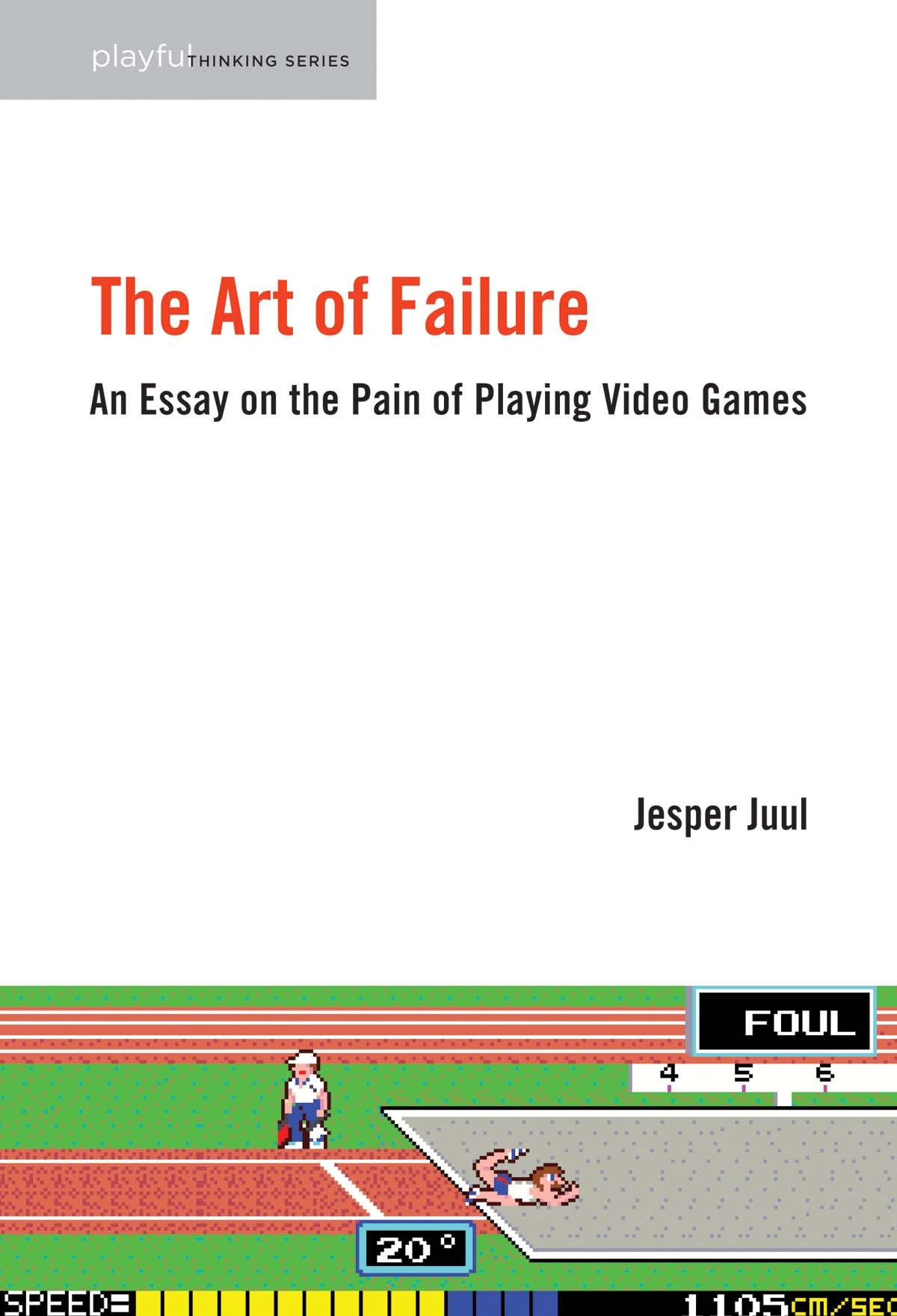
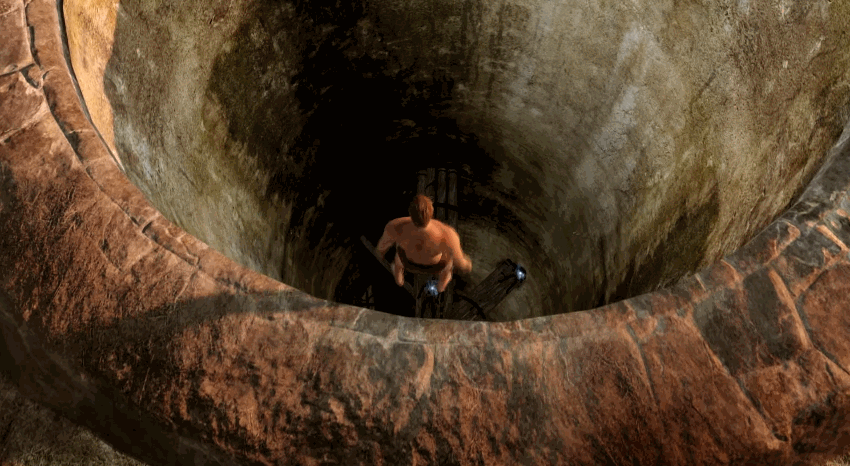
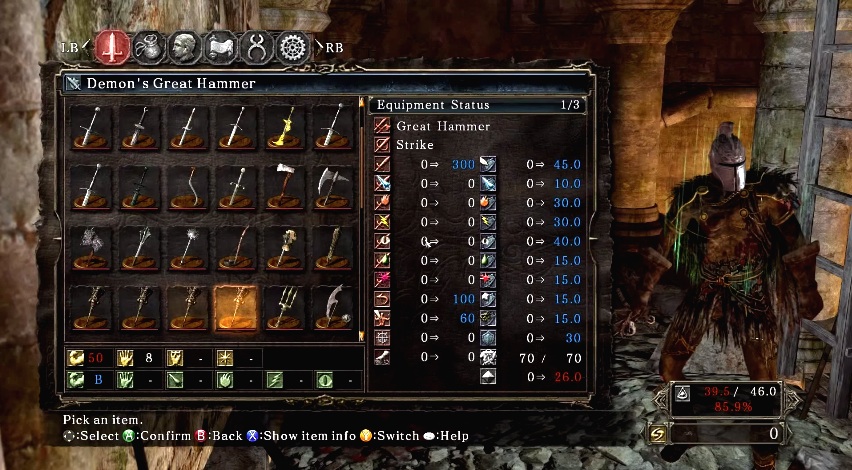
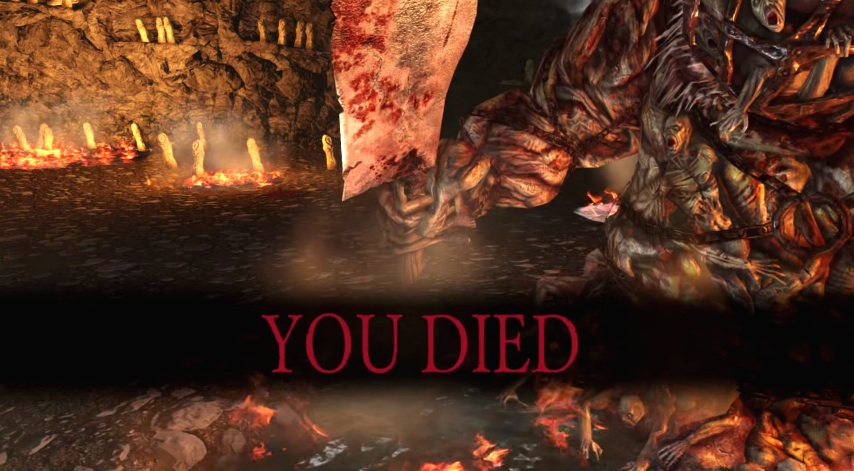
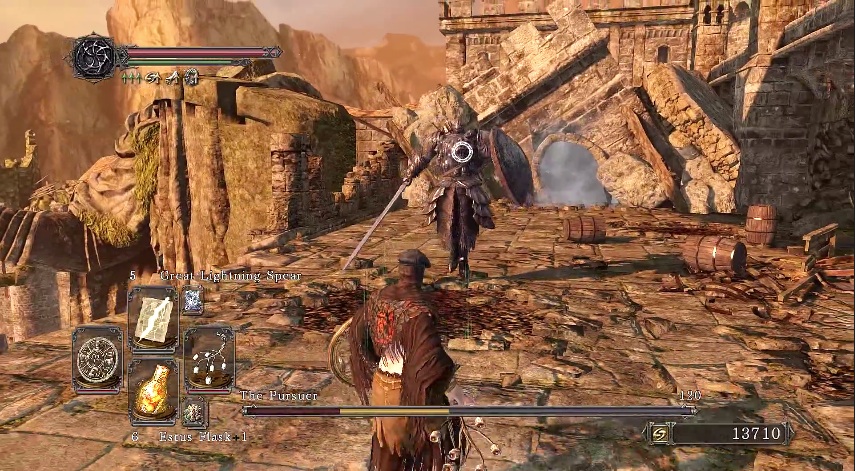
Leave a Reply